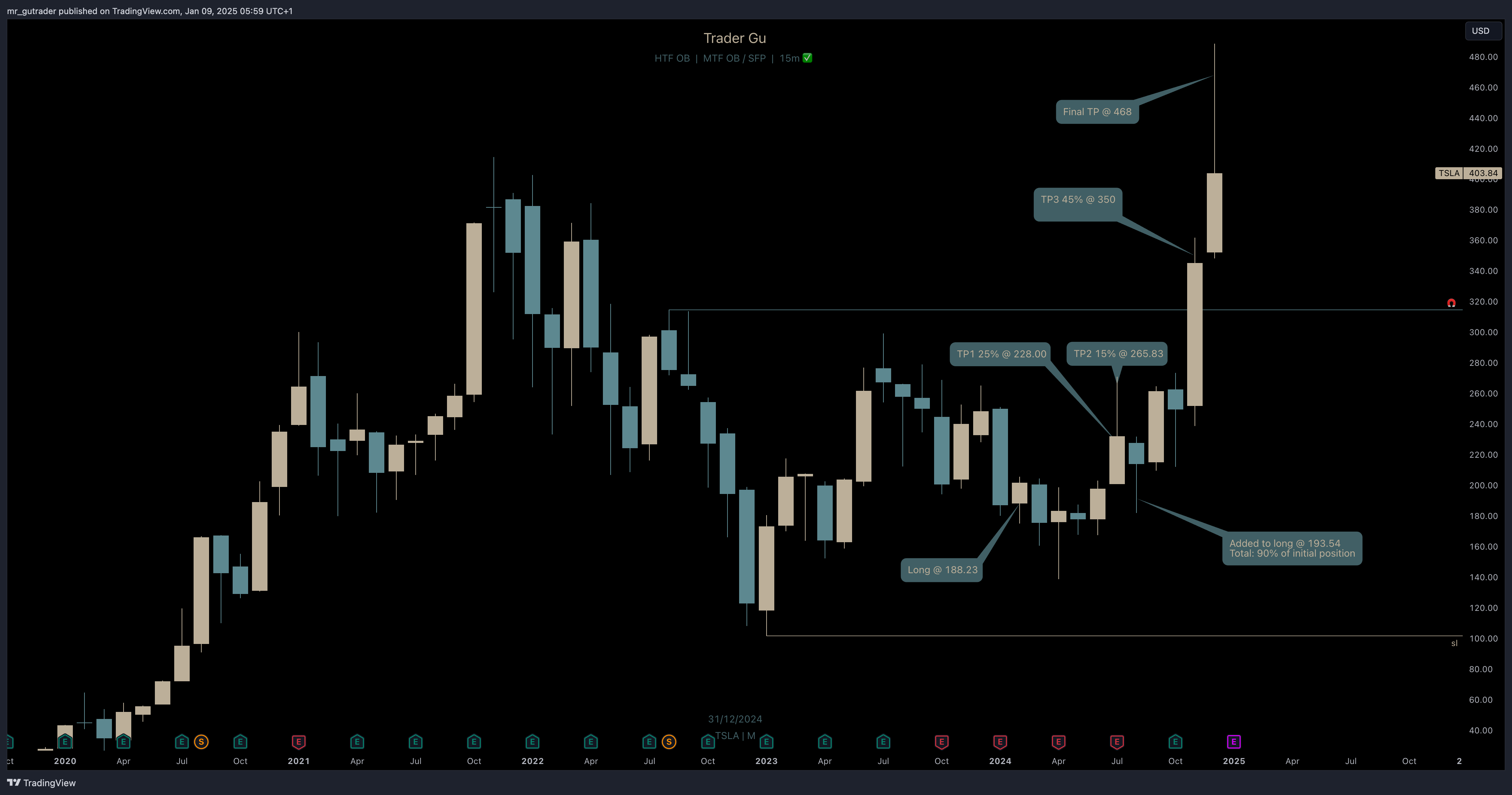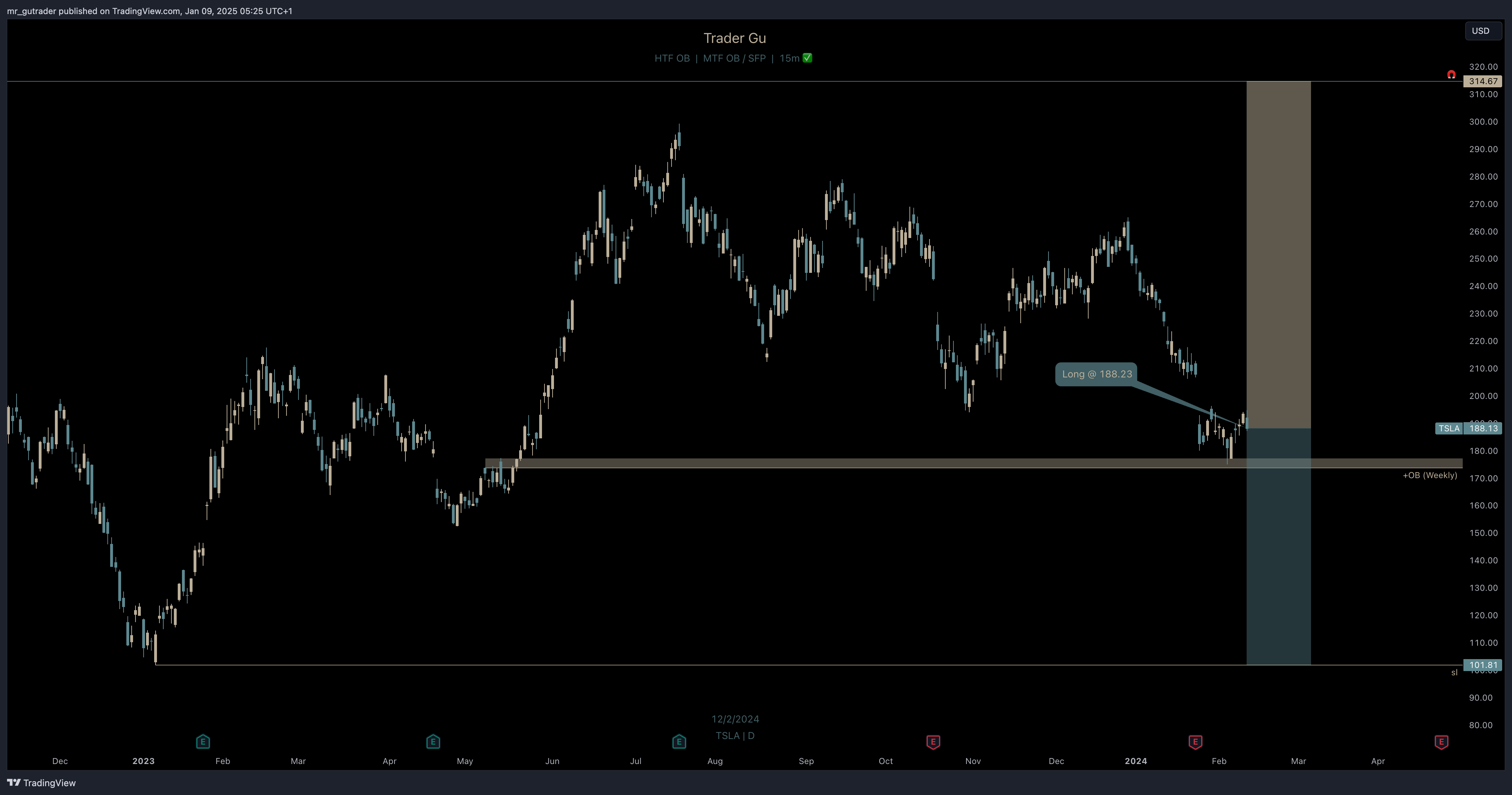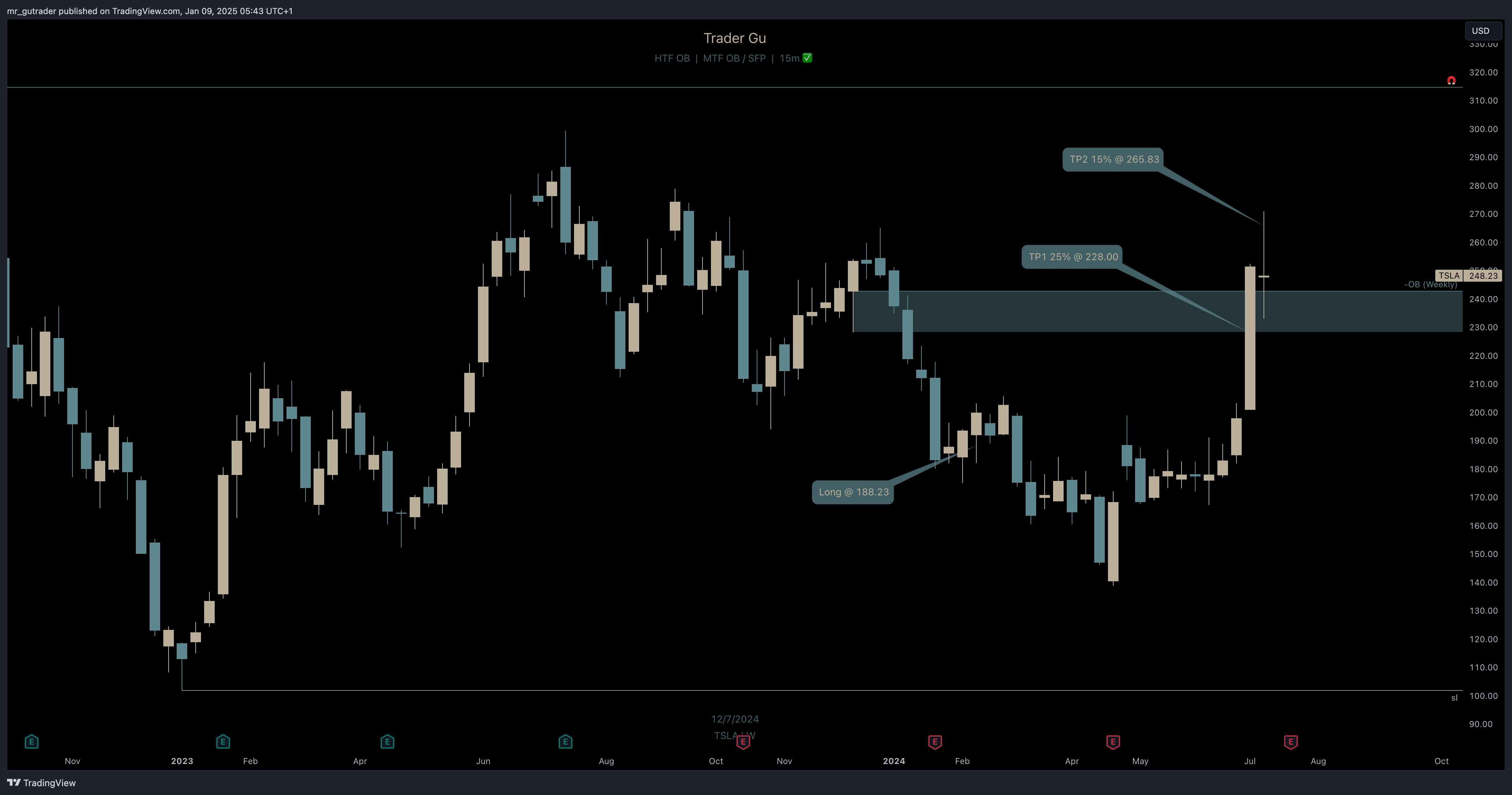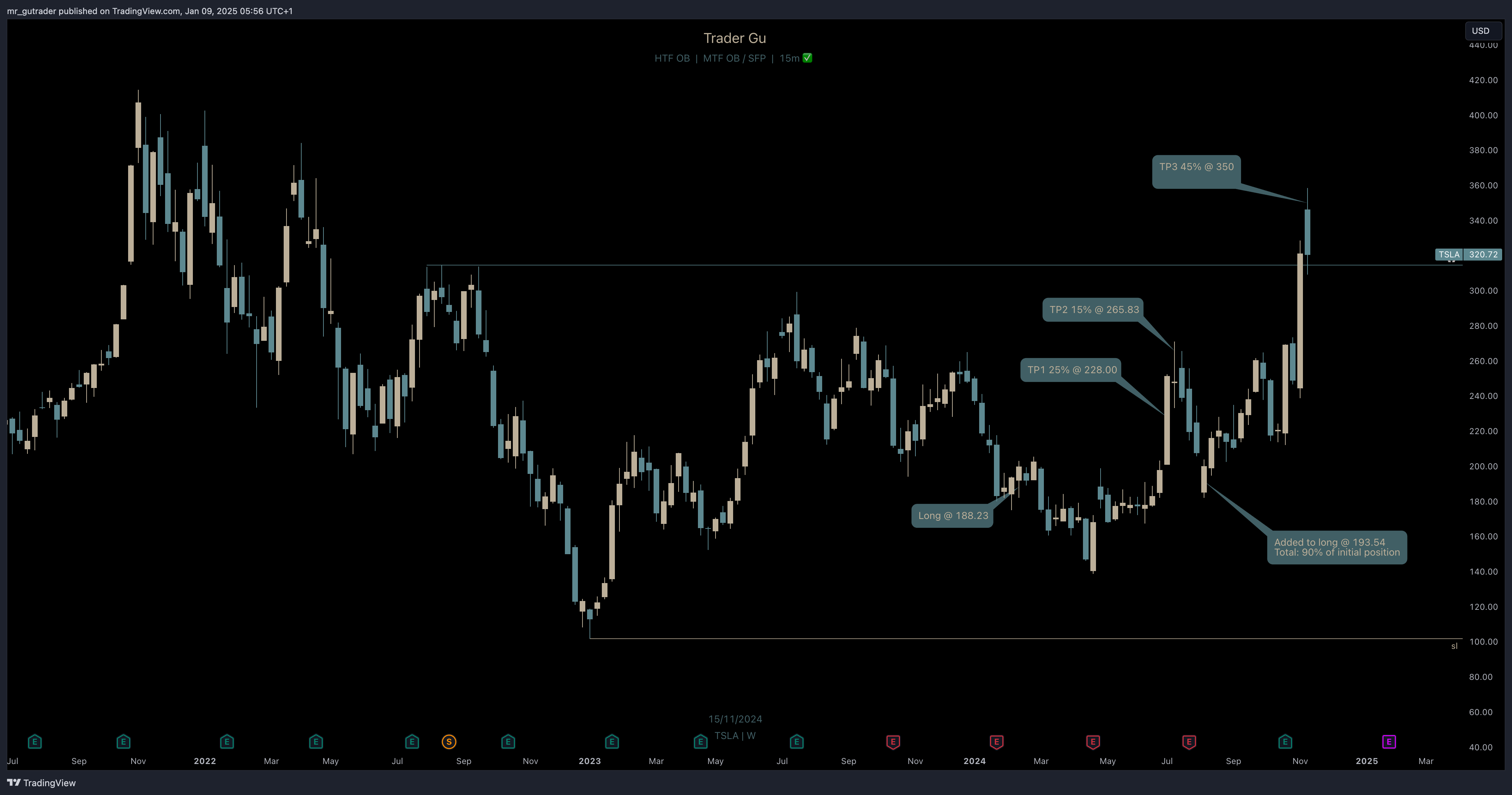$TSLA Trade Analysis: Lessons from a High-Conviction Setup
Introduction: Why Trade Reviews Matter
Trade reviews refine your strategy by highlighting successes, pinpointing areas for improvement, and ensuring you stay aligned with your trade plan. In this post, I’ll walk you through my TSLA trade where I achieved a 2.5R gain and a 25% portfolio increase.
Area of Interest
The Tesla chart had developed a monthly bullish market structure from the 2023 low of $100 and upwards. I was particularly interested in trading the retracement back to the monthly OB around $190-$200. The higher timeframe target for this trade was $315. The thesis supporting this target was based on a previous close above the 50% level of a bearish order block, suggesting further upside potential and invalidation of that bearish level.
 Figure 1: Area of interest, monthly
Figure 1: Area of interest, monthly
Trade Idea Development
The weekly chart was initially in a clear bearish market structure but indicated a strong reaction at the weekly order block around $175. This reaction suggested the potential beginning of a market structure shift towards the upside on the weekly timeframe. However, If the $175 level was instead a new weekly lower low, there was still a high probability of retracing upwards to the bearish weekly order block around $230-$245 before moving lower. As both the monthly and weekly charts indicated potential movement to the upsde, I began looking for an aggressive trade entry.
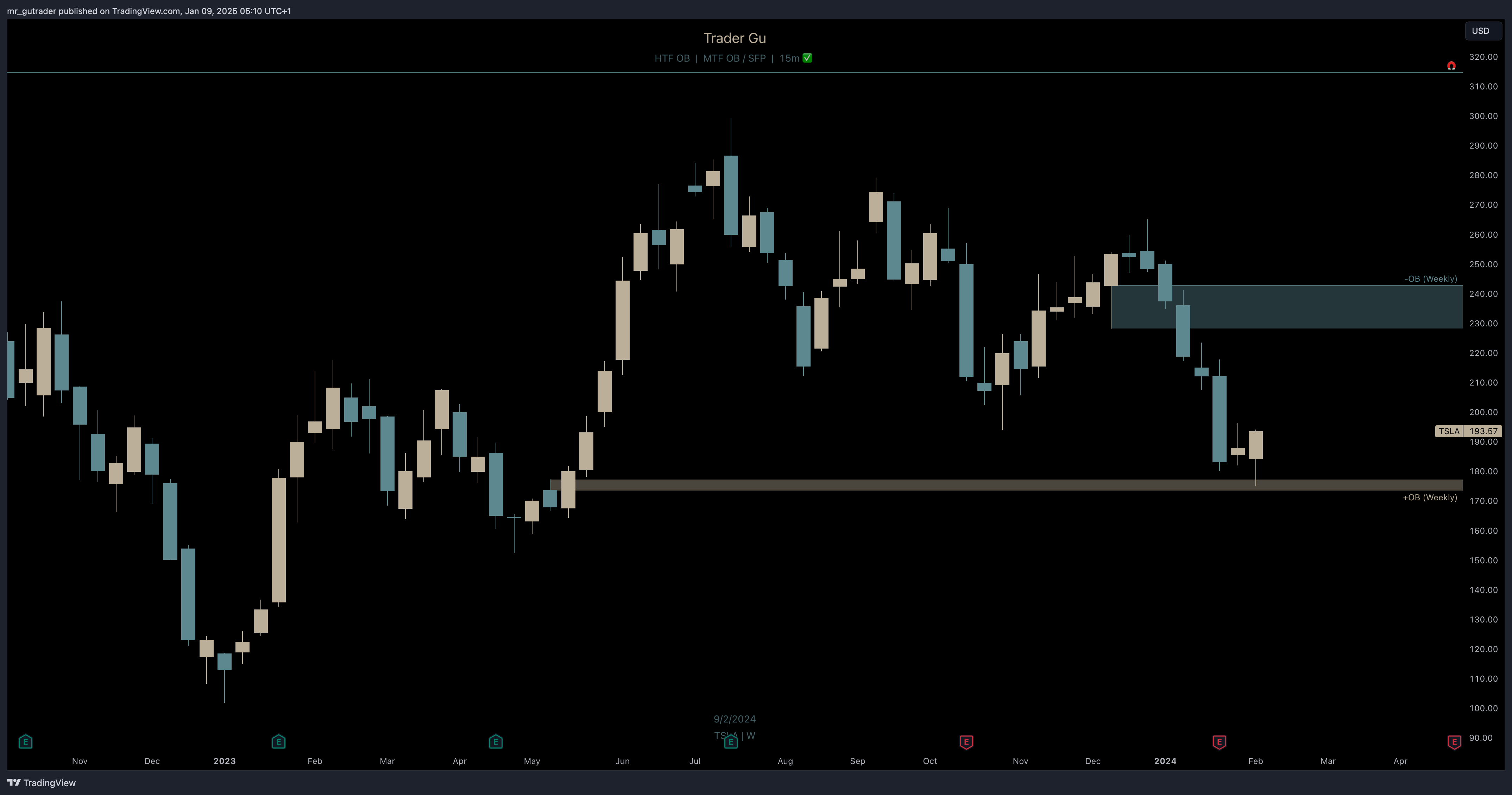 Figure 2: Area of interest and bullish reaction, weekly
Figure 2: Area of interest and bullish reaction, weekly
Entry Trigger
The daily chart had not yet confirmed a market structure shift to the upside, but it closed above the 50% line of a previous daily bearish order block. This suggested the potential start of a trend change. While this is not my preferred entry trigger and considered highly aggressive, my eagerness to enter the trade led me to take a position on the retracement to the $188 level supported with a wide stop loss. My plan included refining the position once a clear weekly market structure change was evident.
Entry: $188.23
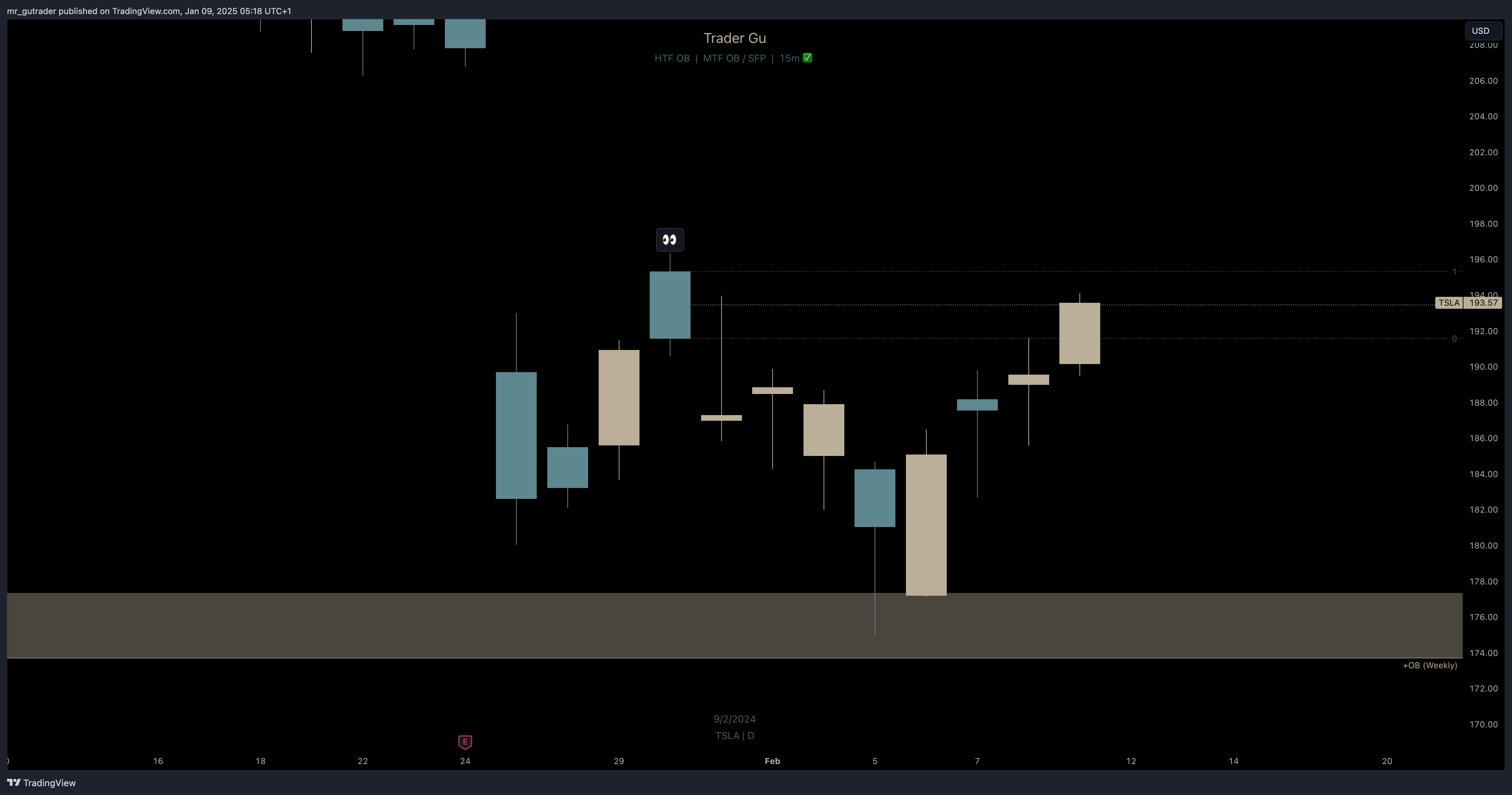 Figure 3: Entry trigger, daily
Figure 3: Entry trigger, daily
Failed Trigger and Preferred Entry
Fast forward a few weeks, it became evident that the initial entry trigger was invalidated. The price moved lower, confirming that my entry was too aggressive. However, once the market moved higher and a weekly open above the previous lower high was established, the trend had shifted bullish on the weekly timeframe. The preferred entry would have been at a retracement from this weekly open to the newly formed bullish order block around the $170-$175 level. Despite recognizing this, I decided not to adjust my position or stop loss, as my initial entry was relatively close to the preferred entry zone.
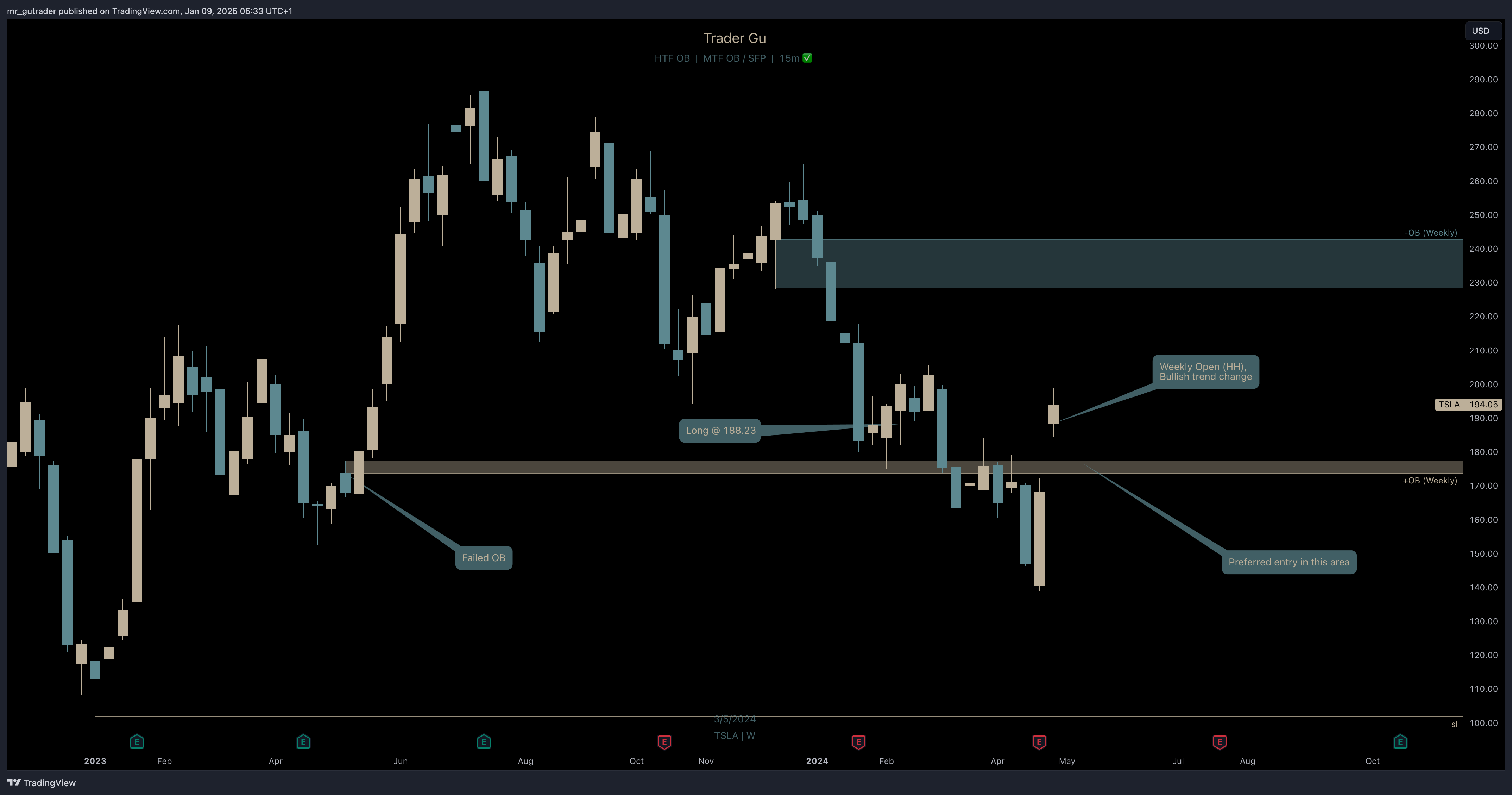 Figure 5: Failed trigger and preferred entry, weekly
Figure 5: Failed trigger and preferred entry, weekly
Partial TP Target Levels
My partial TP levels were based on the weekly order block between $230 and $245, aligning with the Fibonacci TP levels at 235 and 259 for the new bullish market structure. Take profits were executed as follows:
TP1 (25%) at $228
TP2 (15%) at $265
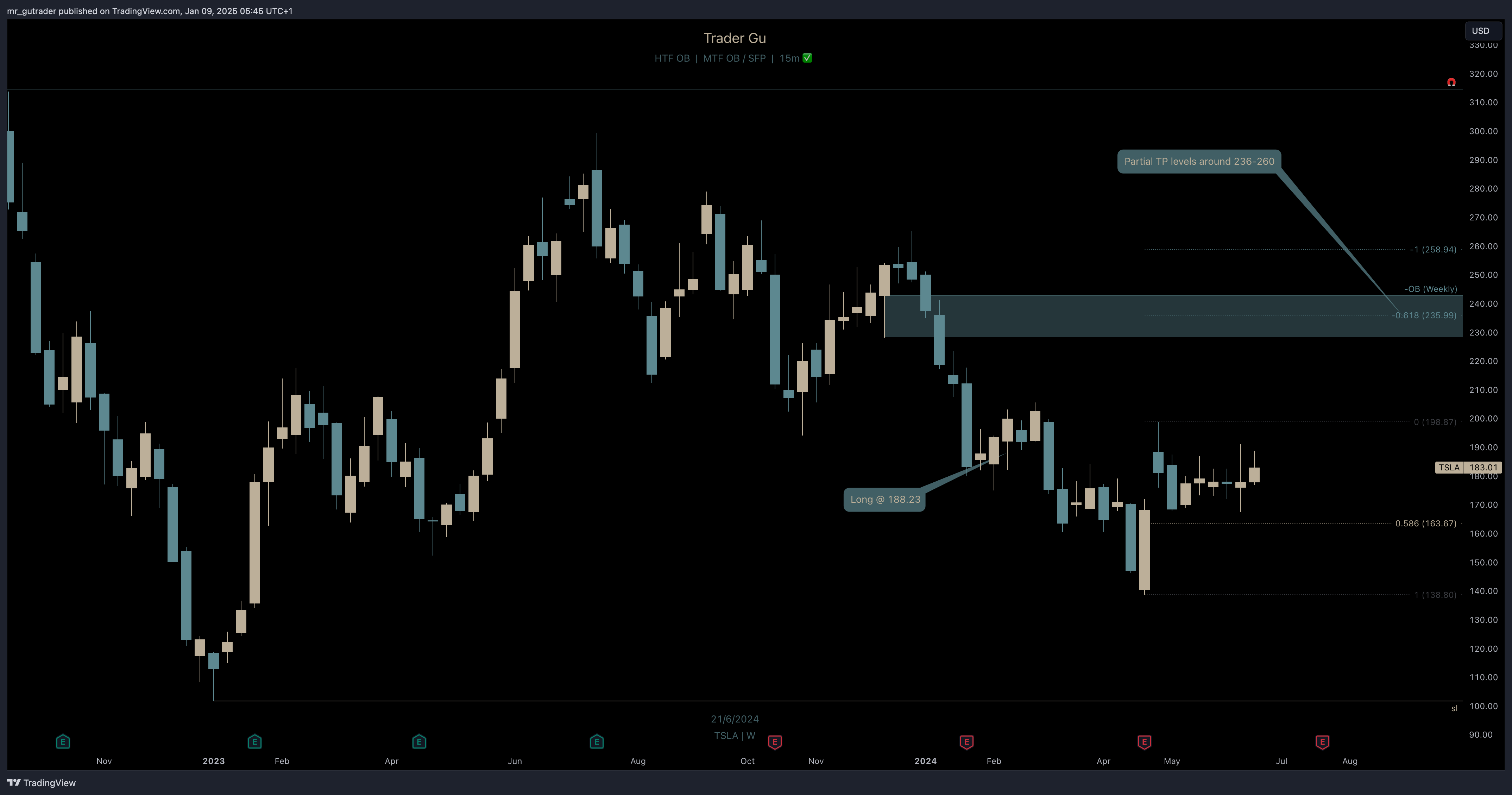 Figure 6: Partial TP targets, weekly
Figure 6: Partial TP targets, weekly
Adding to Position
After the price retraced back to the bullish order block around $190, I re-entered the trade, building my position to 90% of the initial size. This strategic re-entry allowed me to capitalize further on the anticipated upside momentum while maintaining manageable risk after the initial partial take-profits.
Added to long at $193
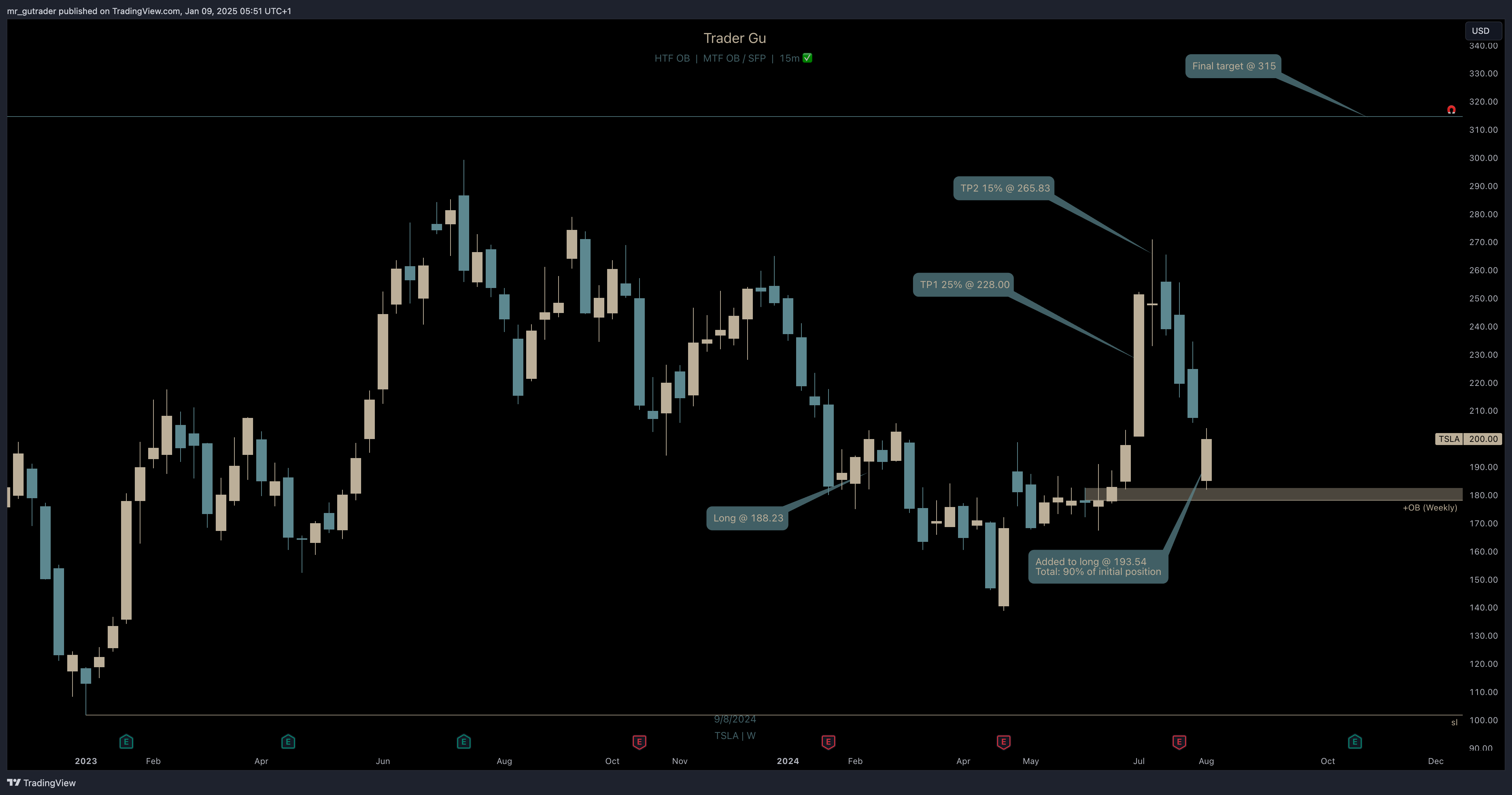 Figure 8: Add to position, weekly
Figure 8: Add to position, weekly
Take Profit at the Monthly Target Level
The price approached the final monthly target level at $315. I secured 45% of the position, allowing the remaining portion to run towards higher targets with no additional risk.
TP3: 45% at $350
Final Take Profit (Exit Position)
Price continued to move higher, creating a new all-time high. I decided to exit my position entirely at $468, securing significant profits from the trade as I anticipated a retracement to retest previous levels.
Final TP: $468
Summary and Key Takeaways
All in all, this was a very good trade resulting in a 2.5R win and a 25% portfolio increase. The execution of partial TPs and adding back to the position helped maximize the trade’s profitability.
Key Takeaways:
- Patience is key: High-conviction trades may take significant time to develop; let your trade play out to allow the setup to fully realize its potential.
- Strategic scaling: Gradual re-entries and partial TPs at key levels maximized profit potential while managing risk.
- Follow the plan: Sticking to pre-defined levels ensured a disciplined approach, aligning execution with the trade plan while minimizing emotional decisions.
- Let winning trades run: Keeping a portion of the position open for higher targets allowed for significant gains.
